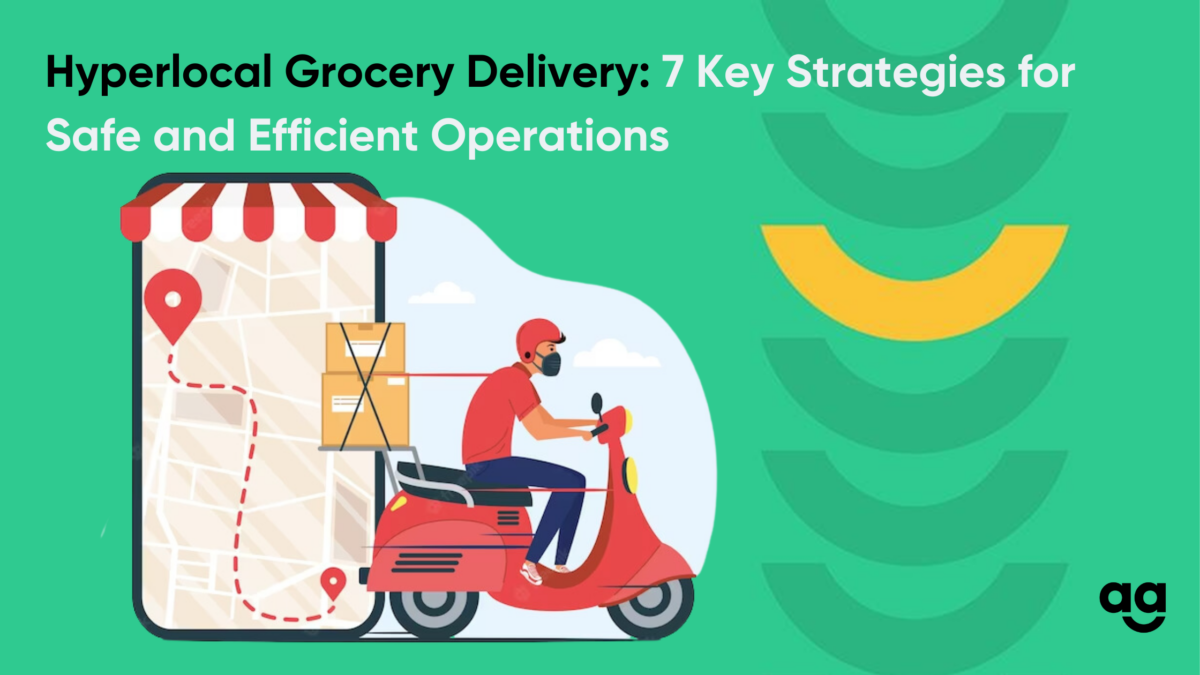Introduction
Hyperlocal grocery delivery has gained significant popularity, especially in recent years. With the convenience of online shopping and the growing demand for quick and efficient delivery, hyperlocal grocery delivery services have become essential for many customers.
However, to ensure safe and efficient operations, there are key strategies that delivery providers need to implement. In this blog, we will explore seven strategies for hyperlocal grocery delivery services to ensure the safety and efficiency of their operations.
Strategy 1 – Robust Delivery Infrastructure
A robust delivery infrastructure is the foundation of a successful hyperlocal grocery delivery service. This includes reliable vehicles, well-trained drivers, and efficient route planning. Consider the following aspects:
Vehicle Fleet: Maintain a fleet of vehicles suitable for grocery delivery, ensuring they are in good condition and regularly serviced to avoid breakdowns and delays.
Driver Training: Provide comprehensive training to drivers on safe driving practices, proper handling of groceries, and customer service skills. Ensure drivers are knowledgeable about food safety and proper handling of perishable items.
Route Optimization: Utilize technology and software solutions to optimize delivery routes, minimizing delivery time and fuel consumption. This helps in achieving efficient operations and timely deliveries.
Strategy 2 – Strong Supply Chain Management
Effective supply chain management is essential to ensure the availability of groceries and streamline the delivery process. Consider the following strategies:
Supplier Partnerships: Establish strong partnerships with local grocery stores and suppliers to ensure a consistent and reliable supply of fresh groceries. Regularly communicate and coordinate with suppliers to maintain inventory levels and prevent stockouts.
Inventory Management: Implement an inventory management system to track grocery stock levels accurately. This helps in ensuring the availability of items for delivery and minimizing the chances of order cancellations due to unavailability.
Quality Control: Implement stringent quality control measures to ensure the freshness and quality of groceries. Regularly inspect and monitor the quality of items received from suppliers to maintain high customer satisfaction.
Strategy 3 – Enhanced Safety Protocols
Safety should be a top priority for hyperlocal grocery delivery services. Implement stringent safety protocols to protect both customers and delivery personnel. Consider the following measures:
Contactless Delivery: Offer contactless delivery options to minimize physical contact between delivery personnel and customers and ensure a safer delivery experience.
Sanitization Practices: Implement rigorous sanitization practices for vehicles, delivery bags, and other equipment. Regularly disinfect high-touch surfaces to maintain a hygienic environment.
Strategy 4 – Accurate Order Fulfillment
Accurate order fulfillment is crucial to customer satisfaction and repeat business. Implement strategies to ensure the accuracy of orders:
Order Verification: Train personnel to verify each order against the customer’s requirements before dispatching for delivery. Double-check the items to avoid missing or incorrect products in the delivery.
Packaging and Labeling: Use appropriate packaging materials to protect groceries during transportation. Ensure clear and accurate labeling to avoid any confusion during delivery.
Strategy 5 – Real-time Tracking and Communication
Real-time tracking and communication with customers enhance the overall delivery experience. Implement tools and practices that facilitate communication:
Delivery Tracking: Provide customers with the ability to track their orders in real-time. Use GPS-enabled tracking systems to offer transparency and updates on delivery progress.
Proactive Communication: Keep customers informed about any delays or changes in delivery schedules. Promptly address any customer inquiries or concerns to maintain a high level of customer satisfaction.
Strategy 6 – Customer Feedback and Continuous Improvement
Collecting customer feedback is vital for improving service quality and identifying areas for enhancement. Implement strategies to gather feedback:
Customer Surveys: Conduct regular surveys to gauge customer satisfaction and identify areas for improvement. Use the feedback received to enhance service quality and address customer concerns.
Performance Analysis: Analyze delivery performance metrics such as on-time delivery rates, order accuracy, and customer feedback. Continuously strive to improve these metrics to provide an exceptional delivery experience.
Strategy 7 – Sustainable Practice
Implement sustainable practices to minimize the environmental impact of hyperlocal grocery delivery:
Eco-friendly Packaging: Use recyclable or biodegradable packaging materials to reduce waste generation. Encourage customers to recycle packaging materials.
Efficient Route Planning: Optimize delivery routes to minimize fuel consumption and carbon emissions. Consider alternative transportation methods, such as bicycles or electric vehicles, for short-distance deliveries.
Conclusion
In the hyperlocal grocery delivery industry, ensuring safe and efficient operations is crucial for customer satisfaction and business success.
By implementing the seven key strategies mentioned above, delivery providers can establish a strong foundation for their operations. A robust delivery infrastructure, strong supply chain management, enhanced safety protocols, accurate order fulfillment, real-time tracking and communication, customer feedback and continuous improvement, and sustainable practices are essential for creating a seamless and reliable delivery experience.
By prioritizing these strategies, hyperlocal grocery delivery services can meet customer expectations, build trust, and thrive in the competitive market while providing a convenient and reliable service to their customers.







 Shipping
Shipping







